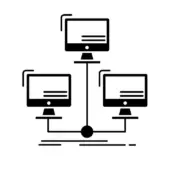Every business relies on a set of core technology systems to function. These solutions include everything from a digital freelancer’s cloud storage account to a fully featured enterprise SAP implementation that serves hundreds of employees, often with an accompanying six-figure price tag. However, product leaders and IT managers can’t expect their core systems to remain relevant forever. As technology advances, so do user expectations. Eventually, the time comes to consider upgrading legacy systems to meet new business needs.
Evolving tech and system needs for businesses may result from external, market-based, or internal, growth-oriented factors. Either way, it is essential that IT leaders make the appropriate judgment call for system upgrades at the right time. Ignoring these needs can compromise data security, cause system incompatibility, and decrease functionality and productivity.
In this article, we look at signs that it’s time for you to look at a system upgrade. We also explore how to determine the best approach for your unique business needs.

Common Signs Your Legacy System Needs an Upgrade
To organize a successful legacy system upgrade, it’s crucial to pinpoint the motivations behind the upgrade itself. These factors will heavily influence the most effective approach for your organization:
Lack of Support
There are many reasons why support falls through, from versioning incompatibilities to technology vendors going out of business. If you can’t rely on support from your original technology provider, you’re on your own when it comes to implementing fixes and patches.
Incompatible Customizations
Hotfixes and ad-hoc upgrades will eventually cause functions to fail, lengthening even the most straightforward project lifecycles. If you have to customize your system so much that it has “hard-forked” away from the original, it may be time to upgrade.
Talent Shortage
Here’s an example: There are more active lines of code written in Common Business Oriented Language (COBOL) today than in any other programming language. However, the mainframe programmers who can write, fix, and extend COBOL code are rapidly retiring. Consider whether this can potentially leave you stuck in the future.
Changing Business Needs
Compliance requirements, acquisitions, and other events can render a perfectly serviceable legacy system irrelevant. In many cases, there are ways to save the system’s functionalities in a cost-effective way.
System Drift
Out-of-date legacy systems often need different technology solutions for tasks they were not designed to accommodate. For example, using a CRM solution for customer document storage degrades both systems instead of the document management system, turning one problem into two.
Competitive Capabilities
Sometimes, new technology offers features and functionalities that are too good to pass up. Cloud-based services and sophisticated SaaS solutions can improve efficiency while reducing capital expenses.
Any of these circumstances can make the idea of upgrading legacy infrastructure an attractive one. However, there are multiple ways to update legacy systems. The most prudent business leaders are those who take the time to fully consider the advantages of each option before committing to an upgrade.
How to Plan for Infrastructure Upgrades Effectively
Organizations must foster a unique technological environment and workflow to meet its specific needs. As a result, there is no one-size-fits-all approach for upgrading legacy systems. The following are some approaches to consider. They can vary widely in price, efficiency, and compatibility:
Complete In-House Replacement
Enterprise SAP implementation vendors generally do not need to incorporate legacy systems into their service agreements. The option to completely replace aging infrastructure is an attractive but expensive one. Nonetheless, it may be the best option for growth-oriented enterprises with deep customization needs.
Legacy API Wrapping
Sometimes, organizations can keep their legacy systems intact by wrapping them in a RESTful API solution. This allows the organization to develop a hybrid infrastructure that relies on highly automated data transfer between the legacy system and the new systems built on top.
Software-as-a-Service
SaaS solutions represent attractive upgrade paths because users generally pay exclusively for the services they use. This makes enterprise resource management a scalable asset that can easily be expanded to meet growth needs or downscaled in response to underperformance as needed.
Cloud Computing
Cloud computing offers the same options as SaaS solutions but with additional access to operating systems, software, and sometimes hardware or other administrative tools. Where SaaS offers great options for small businesses, cloud computing platforms are geared towards larger enterprises.
Managing legacy systems and preparing for the future requires carefully considering the options and correlating them to current and future infrastructure needs. Comprehensive planning can ensure ease of use, communicability, and efficiency well into the future.

Position Your Business for Success—Modernize Your Legacy Systems
Your initial business technology may not support your future growth plans. Outdated legacy systems limit your ability to meet evolving needs and expose you to cybersecurity risks. Modernizing these systems protects your current operations and lays the groundwork for ongoing success and operational excellence. To thrive, you need a robust, flexible technological foundation that keeps pace with the modern business environment. We can help you achieve this.
UpTop specializes in modernizing systems and processes. Whether you require a new system architecture or need to integrate legacy systems, we will thoroughly evaluate your current infrastructure and requirements. Based on this assessment, we develop a digital roadmap and solution that can adapt and scale as your operation expands and evolves.
Improve data security, drive efficiency, and reduce business costs, let’s chat.


